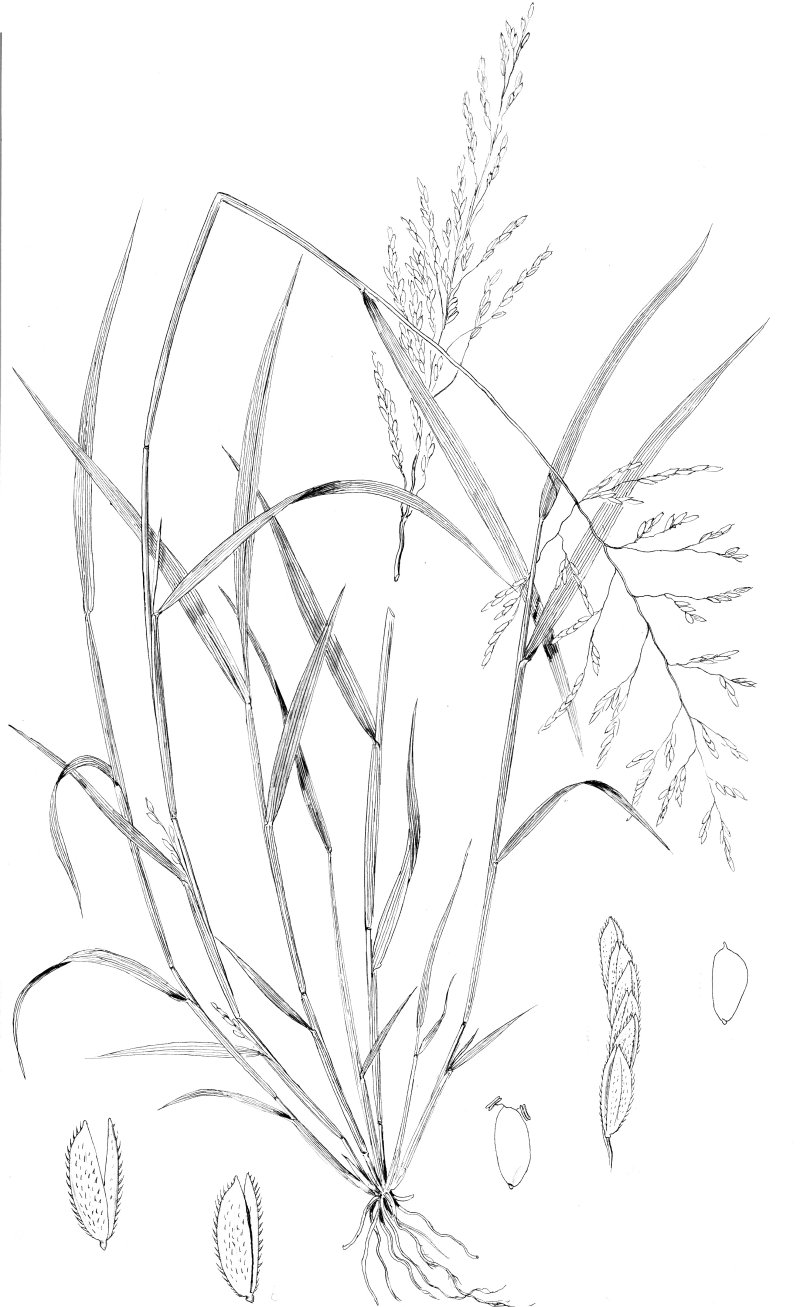
Leersia oryzoides (L.) Rice Cutgrass Habit: Perennial with slender creeping rhizomes, in colonies. Culms: Slender, weak, 1-1.5 m. tall, often rooting at the nodes, glabrous except for the bristly nodes. Blades: 6-25 cm. long, 4-15 mm. wide, flat, narrowed towards the base, very rough with recurved prickles on the margins, sometimes a few hairs on upper surface near the base. Sheaths: Shorter than the internodes, very strongly retrorsely scabrous. Ligule: Membranous, truncate, about 1 mm. long. Inflorescence: Terminal panicle 10-20 cm. long, at last exserted; lateral ones often included at the base, usually open, the flexuous branches finally spreading, bearing short racemes of imbricated spikelets. Spikelets: 4-5 mm. long, 1.5-2 mm. wide, elliptic, 1-flowered, disarticulating from the pedicel, sparsely hispidulous, the keels bristly ciliate, perfect, but those in the open panicles usually sterile, those enclosed in the sheaths cleistogamous and fruitful. Glumes: Wanting. Lemmas: Hispid, strongly bristly ciliate on the keel, boatshaped, somewhat indurated, awnless, clasping the palea by a pair of strong marginal nerves. Palea: Similar to the lemma, about as long but much narrower, 1-nerved. Stamens: 6 or fewer. Fruit: Grain. Habitat: Swamps, riverbanks, lake edges. August-October. Kansas Range: Nearly throughout.